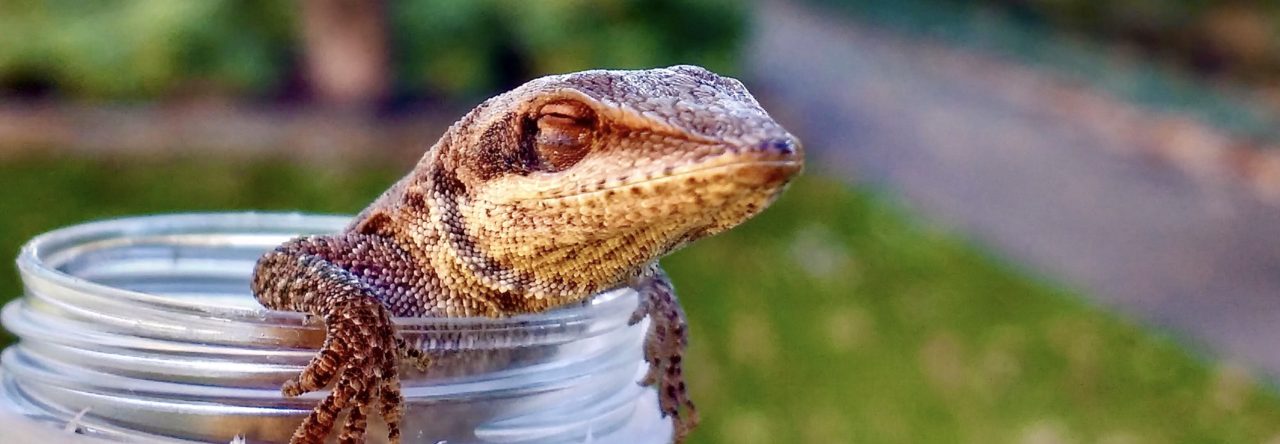
Female A. gorgonae. Photo by Joe Burgess.
Two of the world’s coolest lizards are blue anoles, male A. allisoni from Cuba and both sexes of the fabled blue anole of Gorgona (A. gorgonae). Why the blue? Heck if I know. You can see a male allisoni on a palm from a great distance, so it amazes me that they can survive. Seems clear that they must be trying to advertise their presence. On the other hand, I’m told that A. gorgonae can be very hard to spot when one looks up toward the canopy, where the species hangs out. In this instance, the blue may actual serve for crypsis. Who knows?

Lets not forget the blue toes of Anolis bartschi! Photo by Joe Burgess.
Turns out that there are lots of blue animals and the reason for their blueness, as well as the mechanism by which it is produced, is not well known. Kate Umbers has just published a nice review in Journal of Zoology on all things blue, and it’s a worthwhile read, even if she didn’t mention anoles, or even hardly any lizards at all. Among other interesting tidbits, she points out that dichotomizing colors as structural or pigmentary is somewhat misleading, because both pigments and structure can work together to produce blue colors. Also, blue-footed boobies’ feet are bluer when they’re well-fed, and female boobies invest more in their offspring if they have brighter blue feet. Who knows what interesting blue-related aspects of natural history remain to be uncovered in anoles?
Many anoles have blue eyes as well, and this is a trait that seems to pop up repeatedly throughout the clade, though I have no data on this. I wonder what’s up with that.

Anolis peraccae. Photo by Alejandro Arteaga.
As a final bonus, here’s a video of a blue knight anole! (and here’s a previous AA post on the same). The video itself isn’t so sharp, but it’s a blue knight anole!
httpv://www.youtube.com/watch?v=hwHhyqTmqrk&feature=youtu.be&a
- Evolution in Real Time on Lizard Island - March 23, 2025
- Spider Snags Adult Anolis osa - March 22, 2025
- An Homage to the Green Anoles of New Orleans - March 21, 2025



Mark Yokoyama
Anolis pogus often wears blue eye shadow:
http://www.flickr.com/photos/theactionitems/4428352100/
Kate Umbers
Hi Jonathan,
Thanks for the mention! You’re right I didn’t include many lizards, though that was not through lack of wanting. I aimed only to include species on which there has been functional hypotheses tested on their blue colouration (e.g. Macedonia et al 2009 Conspicuousness of Dickerson’s collared lizard (Crotaphytus dickersonae) through the eyes of conspecifics and predators Biol J Linn Soc 97(4) 749-765). Seems not many people have gathered data on functional hypotheses relating to blue colours in lizards. There are very many animals that are blue where the colour’s function has not been tested, too many to count. Nevertheless, no doubt the blue anoles have a cracking story to tell.
cheers,
Kate
Peter Mudde
Being blue is a trait you find occasionally among mediterranean island Lizards.. ( Podarcis sicula, P. lilfordi, P. tiliguerta, P. pityusensis, P. milensis and such)